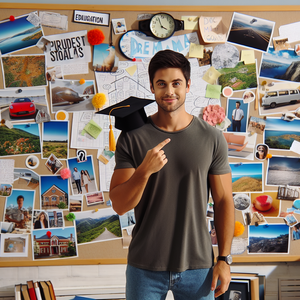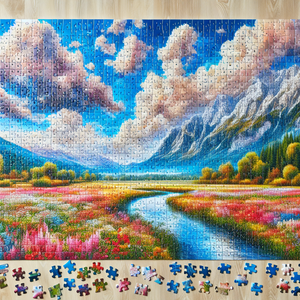The Spiral as a Life Philosophy: A Journey into Nonconformity and Creativity

The spiral is a universal symbol representing growth, evolution, and interconnectedness. For the spiral-walker, it is a way of life that rejects the rigidity of straight lines in favor of fluidity and cyclical existence. Their lifestyle challenges linear thinking, emphasizing the beauty of life's loops and setbacks, and encourages slowing down to engage deeply with the world.
The Discipline of Nonconformity
Living as a spiral-walker requires extraordinary discipline and commitment. Walking in spirals demands meticulous planning and intentionality, while avoiding the letter 'R' in communication fosters creativity and adaptability. This lifestyle exemplifies freedom through limitation, expanding possibilities through intentional constraints.
Creativity as a Way of Life
The spiral-walker’s practices are deliberate acts of self-expression that transform the mundane into extraordinary. Walking in spirals turns public spaces into ephemeral art, while linguistic constraints highlight the flexibility of language. Their lifestyle demonstrates that creativity can be woven into everyday life, not just reserved for traditional art forms.
Lessons for a Linear World
The spiral-walker’s philosophy offers lessons for a society focused on conformity and efficiency. By embracing the unconventional, living with intention, and celebrating imperfection, they inspire us to rethink our own lives. Their practices encourage individuality, mindfulness, and finding beauty in life’s messiness.
The spiral-walker’s lifestyle challenges societal norms and inspires us to live authentically and meaningfully. By embracing our quirks and forging our own paths, we can create lives as unique and imperfectly beautiful as a spiral. In a world of straight lines, perhaps it’s time to take the scenic route.
Experience Designer (Creative Environments & Installations)
Art museums, experiential marketing agencies, or companies like Meow Wolf or TeamLab
Core Responsibilities
Design and implement interactive installations in public spaces, museums, or events that engage audiences on a sensory and emotional level.
Collaborate with architects, artists, and engineers to create functional yet imaginative environments.
Conduct user research to ensure designs evoke intended reactions and foster unique personal experiences.
Required Skills
Proficiency in 3D modeling software like Rhino or SketchUp.
Strong understanding of spatial design, psychology, and storytelling.
Experience working with materials like light, sound, and texture to craft multi-sensory installations.
Linguistic Innovator (Language Creation & Communication Strategy)
Language consulting firms, AI companies like OpenAI, or global NGOs focused on multilingual education
Core Responsibilities
Develop creative linguistic systems or adaptations, such as designing alternative alphabets, inclusive language policies, or communication frameworks for diverse audiences.
Work with writers, educators, or tech teams to apply these innovations in literature, education, or AI-driven chatbots.
Analyze the cultural and social impact of linguistic constraints or modifications.
Required Skills
Expertise in linguistics, semiotics, or computational language processing.
Exceptional creativity and problem-solving abilities in adapting language to unique contexts.
Familiarity with tools like corpus linguistics software or natural language processing (NLP) frameworks.
Behavioral Design Strategist
Design consultancies like IDEO, tech companies focused on wellness apps, or urban design firms
Core Responsibilities
Research human behavior and identify how physical or digital spaces influence decision-making.
Create interventions (e.g., signage, app UX, gamification) that promote mindfulness, creativity, or wellness in users.
Test and optimize designs to ensure measurable behavioral impact.
Required Skills
Knowledge of behavioral psychology and human-centered design principles.
Proficiency in tools like Figma for digital prototyping or Adobe Creative Suite for concept visualization.
Experience with A/B testing and analyzing data to refine strategies.
Conceptual Artist (Social Commentary & Nontraditional Media)
Independent galleries, public art commissions, or organizations like Creative Time or the Guggenheim
Core Responsibilities
Conceptualize and create artworks using unconventional methods or media (e.g., performance art, found objects, or ephemeral materials).
Explore themes like nonconformity, identity, or environmental sustainability through creative expression.
Collaborate with galleries, curators, or public spaces to exhibit work in impactful ways.
Required Skills
Strong background in art history and conceptual thinking.
Ability to experiment with diverse artistic techniques and materials.
Networking and communication skills to present and explain your work to diverse audiences.
Urban Planner (Sustainable & Walkable Communities)
Urban design firms, municipal governments, or organizations like the Urban Land Institute
Core Responsibilities
Develop city layouts or neighborhood plans that enhance walkability, green spaces, and community interaction.
Incorporate principles of biophilic design, circular layouts, or other non-linear patterns to create harmonious spaces.
Work with local governments, architects, and environmental experts to ensure sustainability and functionality.
Required Skills
Proficiency in GIS mapping software, AutoCAD, or similar urban planning tools.
Expertise in sustainable development practices and zoning regulations.
Strong analytical skills to balance aesthetics, practicality, and environmental impact.


